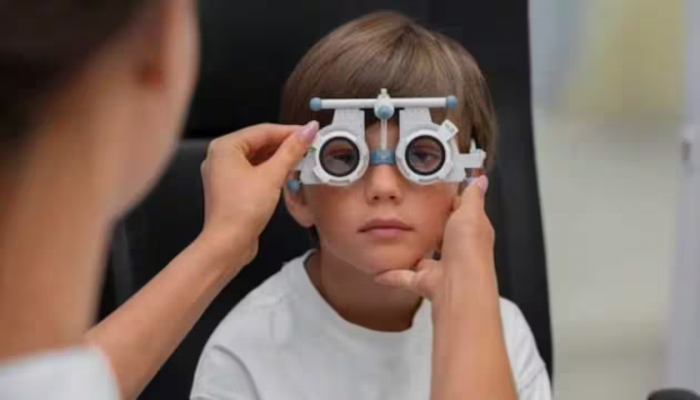Myopia, also called nearsightedness, is a problem of the eyes where things far away look blurry, but things up close look fine. So what is myopia? Myopia is becoming more common around the world, and knowing what causes it can help people take steps to avoid getting it.
This article will discuss the main reasons people get myopia and how to avoid or deal with this vision problem.
Why People Get Myopia:
1. Effects of Genes
Genetics is one of the main reasons why people develop myopia. There is a higher chance that their children will develop myopia if both parents are nearsighted. However, genetics are not the only thing that causes blindness; environmental factors are also very important.
2. Things in the Environment
Things in the environment greatly affect how vision starts and gets worse. Myopia is more common in kids and teens who do a lot of close-up activities for long periods. These activities include reading, watching TV, and using digital devices for a long time.
3. Not Enough Things to Do Outside

A higher chance of myopia has been linked to not spending enough time outside, especially as a child. People who spend time outside are exposed to natural sunlight, which is thought to help keep people from getting vision. One important way to stop this is to encourage play and activities outside.
4. Longer Work Nearby
Working close up for long amounts of time without breaks or proper eye care can strain the eyes and make myopia more likely to develop. This is especially important in this modern age, where people of all ages spend a lot of time on screens for work, school, and fun.
5. Getting Older and Changes in Hormones
Most of the time, myopia shows up in kids and teens when their eyes are still growing. The development might keep going into early adulthood. Hormonal changes and growth spurts during these years can change the eyeball's length and shape, leading to myopia.
6. Pressure on Schools
A higher chance of myopia has been linked to a lot of reading and studying, as well as a lot of stress and pressure at school. Students who work on schoolwork for long periods without taking breaks or doing things outside may be more likely to become nearsighted.
Ways to Avoid Getting Myopia:
1. Eye Exams Every so Often
To find myopia early, getting regular eye tests with an optometrist or ophthalmologist is important. Regular eye exams can help find vision problems early on so they can be treated and managed quickly.
2. Things to Do Outside
Promoting play and activities outside, especially when kids are young, is an important way to avoid getting a vision. When you spend time outside, your eyes are exposed to natural sunshine, which is thought to help keep you from becoming nearsighted.
3. Fair Screen Time
Keeping track of computer time is important. According to the 20-20-20 guideline, it is recommended to take a 20-second break and focus on an object 20 feet away every 20 minutes. This can help reduce the eye pain from using a screen for long periods.
4. Strategies for Teaching
Educational organizations can help stop myopia by using methods that are easy on the eyes. This includes giving students breaks during long study sessions, encouraging them to do things outside, and teaching them how to care for their eyes properly.
5. The Right Lighting
Having good lighting when reading and doing other close-up work is very important. Enough light helps keep your eyes relaxed and reduces eye strain. Keeping your eyes healthy by avoiding lighting too low or bright can help.
6. Making Choices for a Healthy Life
Having good eye health starts with living a healthy life. A well-balanced food full of nutrients, like omega-3 fatty acids and vitamins A, C, and E, helps the eyes work their best. Keeping your eyes healthy also means drinking plenty of water.
7. Laser Eyeglasses
For people with myopia, corrective lenses like glasses or contacts can help them see clearly. Keeping prescriptions up to date regularly ensures corrective glasses work well with vision changes.
8. Orthopedics and Orthotics
Orthokeratology, or ortho-k, is the process of briefly changing the shape of the cornea. At the same time, you sleep using special contact lenses. With this, you might not need glasses or contacts during the day to see clearly. Ortho-k is a reversible choice that must be used regularly to keep working.
Increasing Access to Eye Health
Learning about what causes myopia and avoiding it is important to help anyone keep their eyes healthy.
People can lower their chance of myopia and keep their vision for years by addressing genetic factors, managing environmental factors, encouraging outdoor activities, and making healthy lifestyle choices. Regular eye exams and getting early help are also good for your eyes' general health and well-being.








